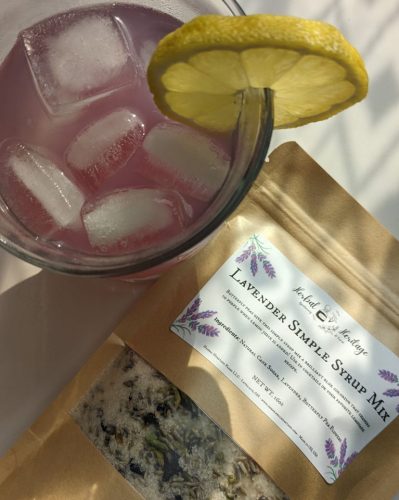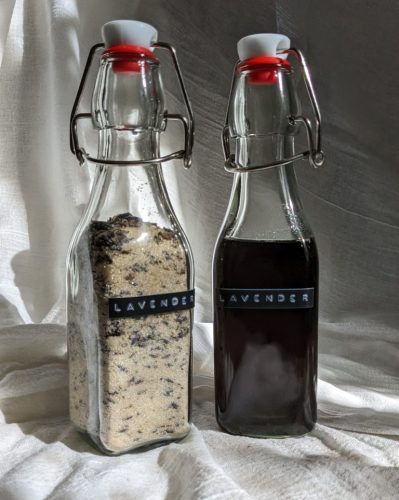

Lavender Lemonade
Our Lavender Simple Syrup Mix is one of the most popular items we carry. We typically make lavender lemonade with this mix and it is what we usually offer as samples at markets. There are so many things you can do with our Lavender Simple Syrup Mix but today I am going to share with you are lemonade recipe!
When making lemonade with our simple syrup mixes there are two main steps you need to follow:
- Prepare the simple syrup
- Combine simple syrup with water and lemon juice
Lavender Simple Syrup
This recipe is using our 16oz Lavender Simple Syrup Mix. If using our 8oz mix, just half the recipe.
INGREDIENTS
- 1 – 16oz Lavender Simple Syrup Mix
- 2 cups of water
INSTRUCTIONS
- Combine the entire bag of Lavender Simple Syrup Mix with 2 cups of water into a saucepan.
- Bring the mixture to a boil and then remove from heat.
- Let the mixture steep for 15-30 minutes and then strain with a fine mesh strainer
The longer you steep it, the stronger the flavor. We typically steep ours for about 15 minutes!
Lavender Lemonade
Makes 1 gallon of Lavender Lemonade
INGREDIENTS
- Lavender Simple Syrup
- 2 cups of Lemon Juice
- 10 cups of cold Water
INSTRUCTIONS
- Combine Simple Syrup, Lemon Juice, and Water into a pitcher and stir to combine
- Serve over ice
*Try replacing the water with soda water to make sparkling lavender lemonade!
A Little Magic
One of the cool things about our Lavender Simple Syrup Mix is that the syrup starts off blue and when you add something acidic (like lemon juice!) it will turn purple!
I always like adding the simple syrup or lemon juice last so show off the color change when the syrup and the lemon juice interact with each other.
If you really want to showcase this color change, especially if you have little ones, you can make individual servings by the glass as well.
Single Serving Lavender Lemonade
- 2oz of Lavender Simple Syrup
- 2oz of Lemon Juice
- 8oz of Water or Soda water
INSTRUCTIONS
- Combine Lemon Juice or Lavender Simple Syrup and water and stir in Lemon Juice or Syrup last to show off the color change!